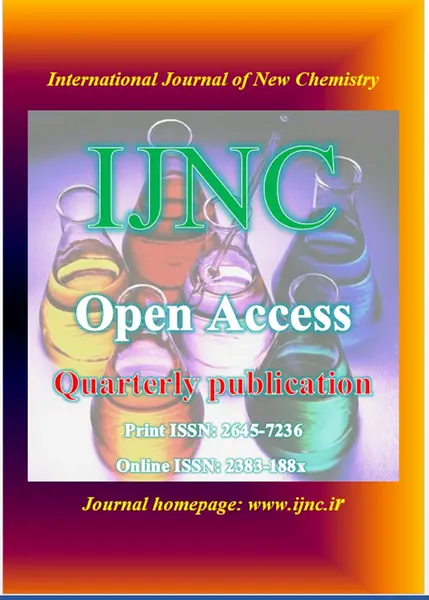-
evaluation of shivering-related factors after general anesthesia in gynecological surgery
جزئیات بیشتر مقاله- تاریخ ارائه: 1400/11/12
- تاریخ انتشار در تی پی بین: 1400/11/12
- تعداد بازدید: 183
- تعداد پرسش و پاسخ ها: 0
- شماره تماس ژورنال: 09122976055
evaluation of shivering-related factors after general anesthesia in gynecological surgery
shivering after anesthesia is one of the unpleasant and undesirable complications after anesthesia; this complication occurs much more often in women than men, and female gender is one of the risk factors; other risk factors have been reported differently in different populations; the aim of this study was to evaluate shivering-related factors after general anesthesia in gynecological surgery. this descriptive study was conducted during 2018 with the participation of 448 women candidates for gynecological surgeries. the prevalence of shivering as well as the factors affecting shivering in all patients were measured and recorded from the moment of entering the recovery unit, and finally the relationship between the available data and shivering after anesthesia was investigated.
the prevalence of chills in our study was 18%; factors such as the size of the surgical site, increasing the length of anesthesia, general anesthesia, anesthesia gas intake and atropine intake are effective factors in the occurrence of shivering after gynecological surgery. finally, it can be concluded that the importance of the three agents of isoflurane used to maintain general anesthesia, intravenous injection of higher volume intravenous crystalloid fluids, and spinal anesthesia, respectively, increased the risk of postoperative shivering in anesthesia. ; hypothermia, on the other hand, was not associated with chills.
حوزه های تحت پوشش ژورنال
مقالات جدیدترین رویدادها
-
استفاده از تحلیل اهمیت-عملکرد در ارائه الگوی مدیریت خلاقیت سازمانی و ارائه راهکار جهت بهبود
-
بررسی تاثیر ارزش وجوه نقد مازاد بر ساختار سرمایه شرکت های پذیرفته شده در بورس اوراق بهادار تهران
-
بررسی تأثیر سطح افشای ریسک بر قرارداد بدهی شرکت های پذیرفته شده در بورس اوراق بهادار تهران
-
بررسی تأثیر رتبه بندی اعتباری مبتنی بر مدل امتیاز بازار نوظهور بر نقد شوندگی سهام با تأکید بر خصوصی سازی شرکت ها
-
تأثیر آمیخته بازاریابی پوشاک ایرانی بر تصویر ذهنی مشتری پوشاک ایرانی (هاکوپیان)
-
بررسی رفتار ساختمان های بتن آرمه بهسازی شده با دیوارهای برشی آلومینیومی
-
ارزیابی درجه تراکم دانه بندی گسسته و پیوسته سنگدانه ها در حالت دو بعدی
-
بررسی طراحی بهینه و عملکرد لرزه ای میراگرهای ویسکوز الحاقی در نواحی زلزله خیز
-
طرح دعاوی خصوصی از نظر ضمان قهری و ضررو زیان وارد در دادگاه های عمومی
-
بررسی نحوه طراحی و رتبه بندی سایت در سامانه leed و breeam و امکان سنجی آن با مقررات ملی ساختمان در ایران
مقالات جدیدترین ژورنال ها
-
مدیریت و بررسی افسردگی دانش آموزان دختر مقطع متوسطه دوم در دروان کرونا در شهرستان دزفول
-
مدیریت و بررسی خرد سیاسی در اندیشه ی فردوسی در ادب ایران
-
واکاوی و مدیریت توصیفی قلمدان(جاکلیدی)ضریح در موزه آستان قدس رضوی
-
بررسی تاثیر خلاقیت، دانش و انگیزه کارکنان بر پیشنهادات نوآورانه کارکنان ( مورد مطالعه: هتل های 3 و 4 ستاره استان کرمان)
-
بررسی تاثیر کیفیت سیستم های اطلاعاتی بر تصمیم گیری موفق در شرکتهای تولیدی استان اصفهان (مورد مطالعه: مدیران شرکتهای تولیدی استان اصفهان)
-
نقش صله رحم در سلامت جسمی و روحی خانواده با تمرکز بر گزاره های اسلامی
-
بررسی تاثیر یارانه سفر بر توسعه گردشگری؛ مطالعه موردی: گردشگران شهر مشهد مقدس
-
evaluate the use of recycled asphalt pavement (rap) in the construction of roller compacted concret pavement (rcc)
-
the transformation of aesthetics in architecture from traditional to modern architecture: a case study of the yoruba (southwestern) region of nigeria
-
exploring in silico drug design and pharmacokinetics study for identification of potent antidepressant agents


سوال خود را در مورد این مقاله مطرح نمایید :